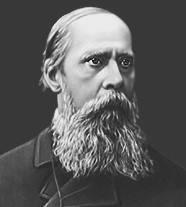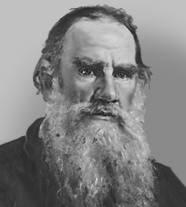Moscow
As far back as the 12th century, Moscow was known as a small estate
of Prince Yuri Dolgorukiy; in 1156 it was walled and thus became a town,
or rather a fortress on the bank of the Moskva River, then an important
trade route.
· Its subsequent economic and political development was due to its favourable
geographical position.
· The city was razed in the 13th century during the Tatar invasion,
and for many years paid a tribute for the Tatar Khans.
· But toward the end of the 14th century it rose against those rulers,
sometimes fighting, sometimes paying ransom.
· It gradually grew stronger and became the capital of the new state
of Muscovy.
· By the end of the 16th century, during the reign of Boris Godunov,
Moscow had three walls with towers and moats surrounding respectively
the Kremlin, the Kitai-Gorod and the White City.
· Foreigners who visited Moscow in the 16th and 17th centuries as trade
representatives or as architects or military and industrial advisers
usually expressed their delight with the picturesqueness of the city
but noted the dirty streets and wretched wooden houses that they found
on closer inspection.
· At the beginning of the 18th century Peter the Great moved the capital
to St. Petersburg, but Moscow continued to grow as a trading city.
· With the invasion of Napoleon in 1812, four-fifths of Moscow was destroyed
by fire, but it was soon rebuilt and trade and industry developed again.
· The city was at its height by the middle of the 19th century.
· The Kremlin is the heart of Moscow. It was built on the elevated left
bank of the Moskva River.
· The Kremlin didn’t always look the way it does today. The first Kremlin
was small, only one-twentieth of the territory it occupies now.
· After two centuries, the wooden walls built in Yuri Dolgorukiy’s time
were replaced by a fortification made of thick oak logs in the reign
of Ivan Kalita.
· A new white-stone Kremlin was built in the 14th century.
· By the end of the 15th century, new brick walls completed the roughly
triangular shape of the present Kremlin.
· Each side of the Kremlin was guarded by towers, which have generally
preserved their form from ancient days. The Kremlin towers were built
for decoration and have no military significance.
· The most famous tower of the Kremlin is the Savior’s Tower (Spasskaya
Bashnya), it’s the symbol of the Kremlin.
· It was built in 1491 and got its name from the icon of the Savior.
The tower is also famous for its clock, which is one of the symbols
of a new year in Russia.
· Each century has left its imprint on the Kremlin.
· After the Soviet capital was transferred to Moscow in March 1918,
the Kremlin became the residence of the Soviet government. Now it’s
the residence of the Russian government.
· The Kremlin’s special role is not only in its central location and
the fact that all of the main roads of the capital lead to it.
· Since the earliest years of the Russian state, it has been at the
centre of national attention, a place where history is made time and
again, a symbol of the unity and eminence of Russia.
· Red Square, which means Beautiful Square in the old Slavonic language,
is Moscow’s main square.
· It is situated in the very centre of Moscow, by the walls of the ancient
Kremlin. Its territory is 73 sq. km.
· It took many centuries for Moscow to be built up.
· During that time the buildings, which surrounded Red Square, were
built, rebuilt, suffered in the big fires, were restored, until finally
the present-day ensemble of the buildings, including St. Basil’s Cathedral
justly called “a song captured in stone”, was evolved.
· Pokrovskiy Cathedral, or St. Basil’s Cathedral, was built in 1560
during the reign of Ivan the Terrible in Red Square in honour of the
capture of Kazan.
· It was built of stone in the traditional Russian style; it represents
the compositional unity of nine colourful cupolas of nine pillar-like
churches.
· The northern side of the Square is overlooked by the massive, traditionally
Russian style building of the History Museum.
· In 1818 the first sculptural monument in Moscow appeared in Red Square.
· It was erected in the memory of Kuzma Minin and Dmitriy Pozharskiy,
the famous leaders in the liberation war against the Polish invaders.
· In 1930 the Lenin Mausoleum was built of granite to replace a wooden
mausoleum in Red Square.
· It is characterized by an extremely austere architectural style.
· Red square has witnessed many great historical events, such as the
liberation war in1612, the Victory Parade in 1945, greeting the first
spaceman Yuri Gagarin in 1961.
· For many centuries, people came to Red Square in the days of joy and
sorrow.
· To sum it up I would like to prolong Samuel Johnson’s words: “When
a man is tired of Moscow, he is tired of life”. To my mind, it is a
100% true. There is always a lot of interesting, new to be discovered,
many places to visit and things to see in the capital of our country.



